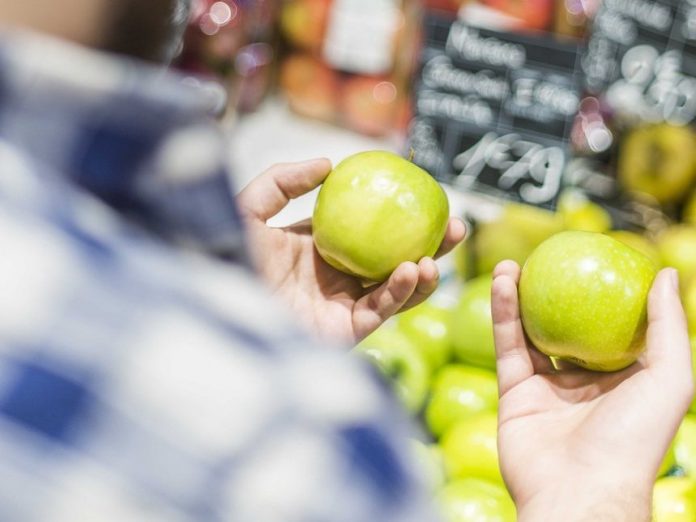Want to know a really simple way to eat better? If you don’t have unhealthy food in your cupboards, you won’t eat it.
Is one of your resolutions this year to eat healthier? We’ve got some tips on how you can turn your resolution into reality, starting at the grocery store. By following these tips, you’ll be shopping smarter and healthier in no time.
Stay on the Perimeters of the Store
Most grocery stores keep all their healthy foods around the perimeter of the store. That includes fruits, vegetables, dairy, and seafood. When you’re grocery shopping, stick to the outer areas of the store. Then you won’t be tempted by the chips, cookies and other unhealthy processed foods that lie in the inner aisles.
Look for Foods with Minimal Ingredients

To help you avoid buying foods that are processed and refined, look for foods that don’t have many ingredients—five or fewer is usually best. By only choosing foods with a short ingredient list, you’ll avoid plenty of added chemicals, sugars, preservatives and fats.
Shop the Frozen Food Section
Many people avoid the frozen food aisle because they believe that all frozen foods are unhealthy or less nutritious than their fresh counterparts. However, this is not necessarily true! You should definitely avoid frozen processed foods like french fries and TV dinners.
However, frozen vegetables and frozen fish are just as nutritious as the fresh versions—with the added bonus of being more affordable and easier to access year-round. If you’ve never cooked frozen fish before, check out our tips on how to make a delicious dinner from frozen seafood.
Plan Your Meals Before You Shop

Planning out your meals for the week before you go to the grocery store is a great way to ensure you eat healthy, save money and avoid food waste. It also means that when you go to cook a healthy meal later in the week, you’ll already have everything you need.
To create a meal plan, decide which meals and snacks you’ll make in the coming week, write down the ingredients you’ll need and then shop only for the things on your list. You’ll avoid making extra trips to the store during the week, and with a complete list ready to go, grocery shopping will hardly take any time at all.
Read the Nutrition Label
Many packaged foods that claim to be healthy on the front of the package actually have a lot of added sugar or fat hiding in the list of ingredients on the back.
When you’re grocery shopping, check the nutrition facts panel to ensure the food isn’t hiding any empty calories or additives. If you have a particular health goal (such as trying to add more protein into your diet), reading the nutrition facts panel will help you compare products and find foods with the nutrients you need.
If your goal is to eat healthier this year, keep these tips in mind next time you go to the grocery store. And remember, if those unhealthy snacks don’t go in your cart, they won’t go in your house—and that makes it much easier to eat right.
Photo credits: Raquel Martinez, TL_Studio, Monkey Business Images






